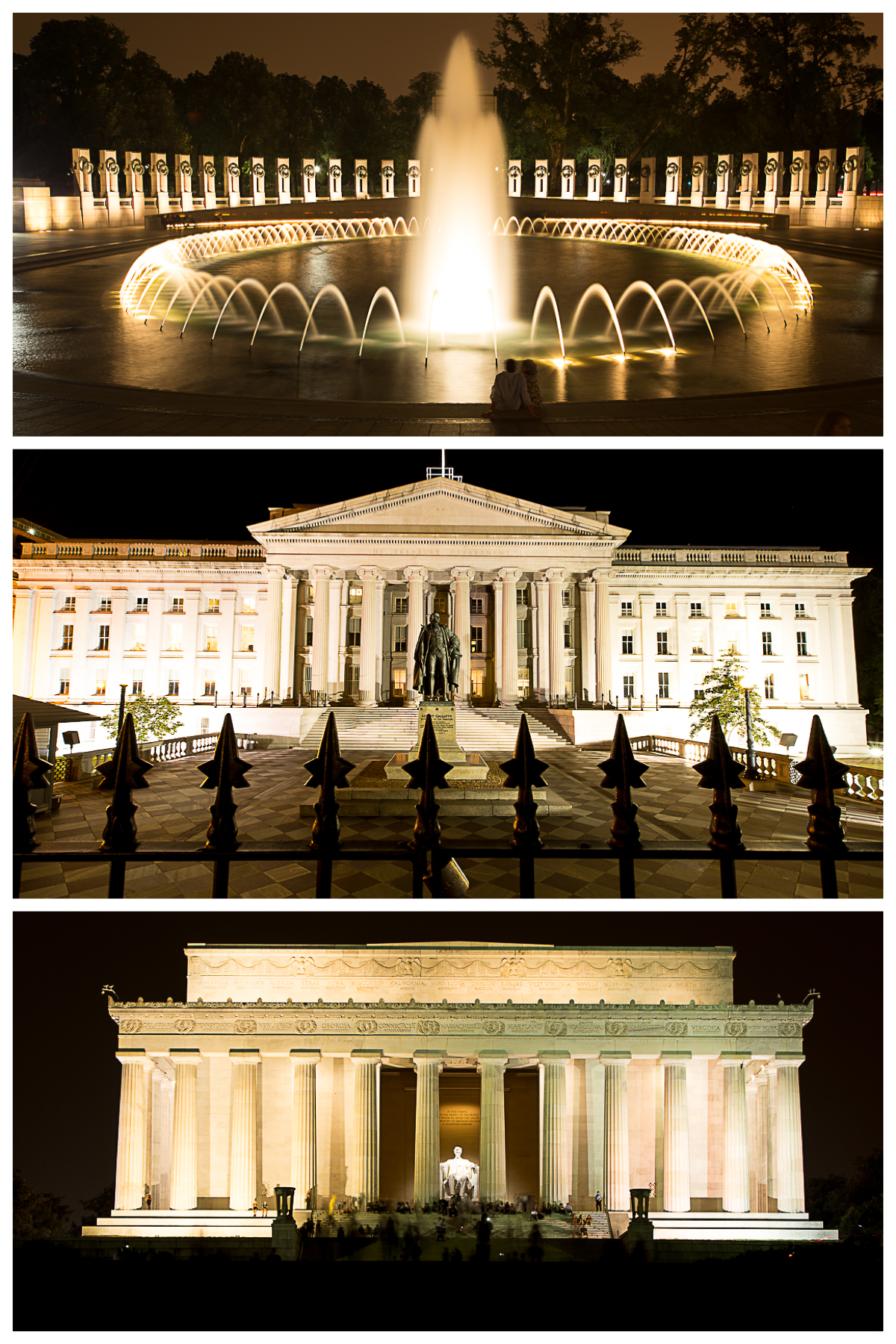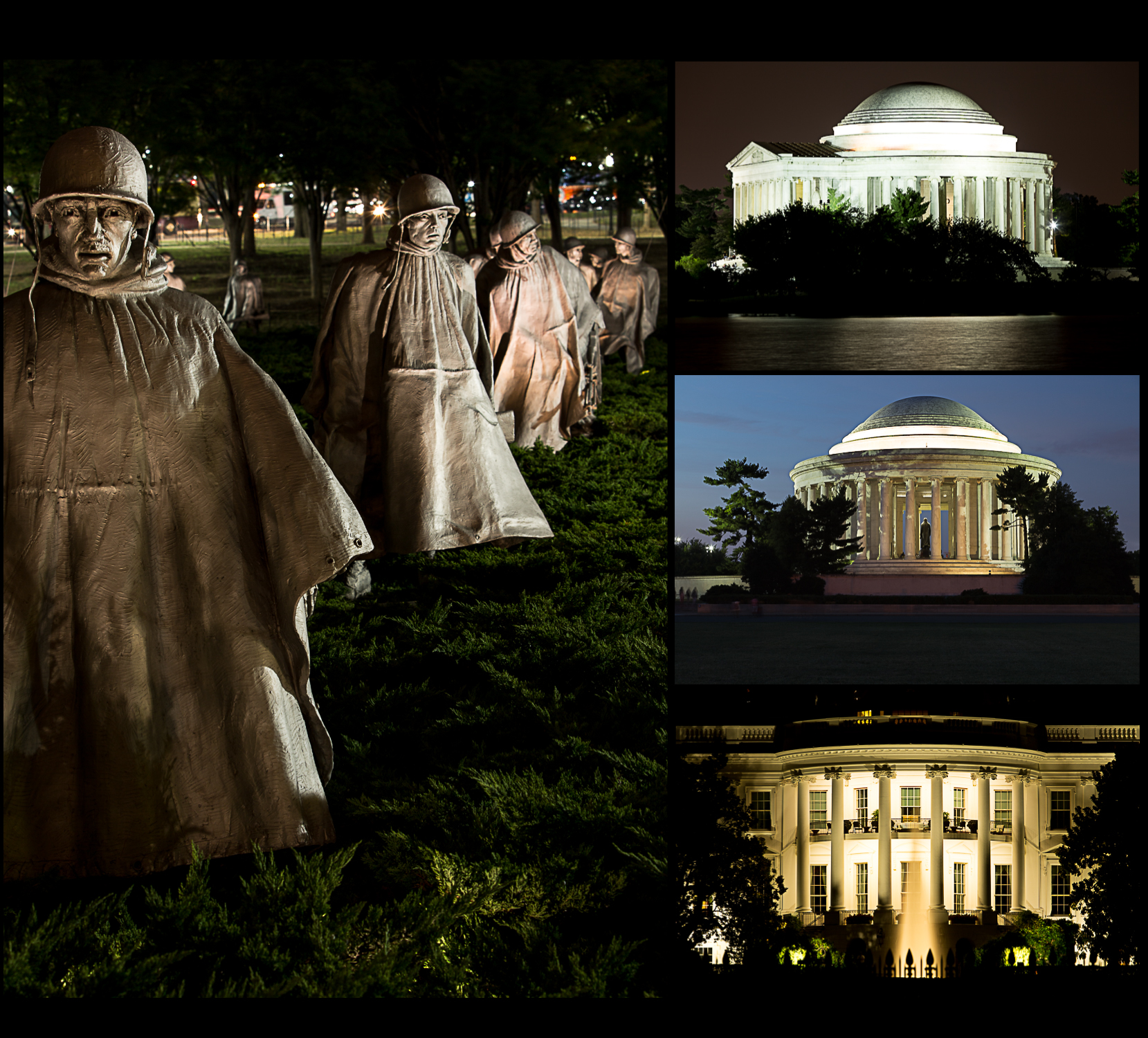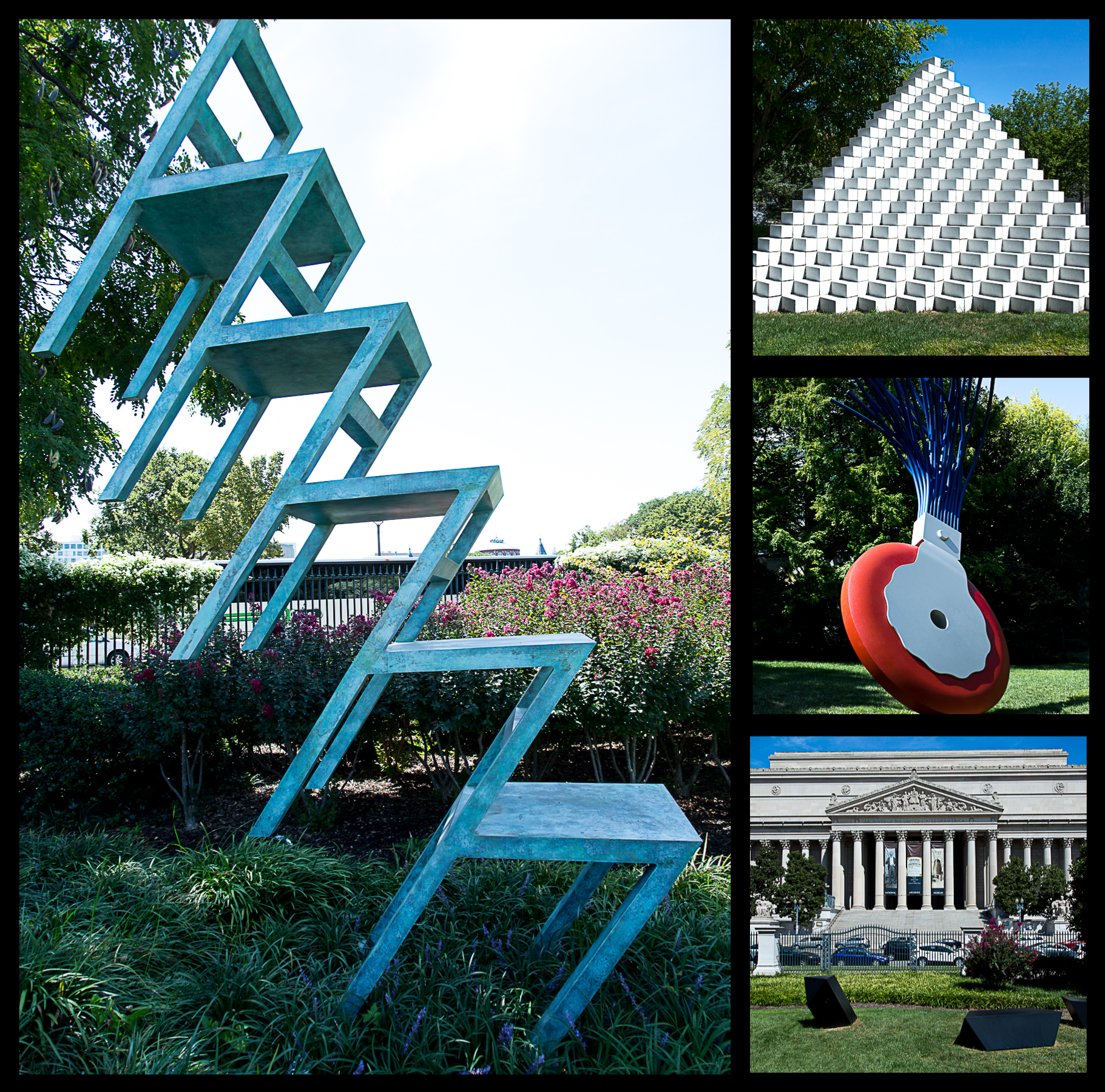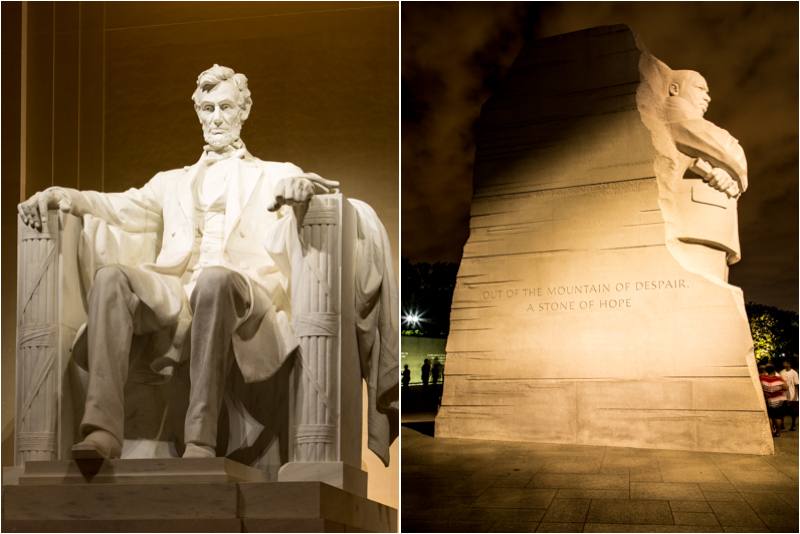Washington DC Monuments : Night Architecture Safari
I've been to Washington DC several times but this time the trip was focused on photographing monuments at night, what I like to call as a "Architecture Safari Trip".
Photographing at night means you need to carry your tripod and mine is heavy which makes it difficult to walk from one monument to the other.The "hop-on / hop-off" night time Big Bus Tour covers a lot of sites but not all. Best option is to use the bike ride system or cab it. I cabbed it 🙂
My favorite was going to the Lincoln Memorial and watching the reflection of the Washington Monument in the Reflecting Pool at "blue hour". Then walk to the other end of the Reflection Pool and photograph the Lincoln Memorial. I also enjoyed sitting by the fountain at the WW II Memorial and looking at the Lincoln Memorial on one side and the Washington Monument on the other side.
The Korean War Memorial is another great site with illuminated fear filled faces of men in combat. This is also a great place to photograph in the afternoon when the sun falls on their back and you see shadows of the soldiers on the granite wall giving the site a very dramatic look.
I visited DC during the Labor Day weekend. One thing I would do differently is visit DC during Cherry Blossom season (early April). Each year the Cherry Blossoms burst into a beautiful pink color lining up the Tidal Basin along the West Potomac River which makes the trip to the Jefferson Memorial even more worthwhile. Walk around the memorial and along the Tidal basin to find the exact spot where you can see the Jefferson statue perfectly lined up between the columns. If you are lucky and there is no wind you will get crisp reflection of the memorial on the waters of the Tidal Basin.
The White House....whether you like its occupant or not, its a lovely house to photograph 🙂
The National Gallery Sculpture Garden was a new site for me this time. It features a large collection of installations. My favorites were the Claes Oldenburg's typewriter eraser, Lucas Samaras's chair transformation and Sol LeWitt's four-sided pyramid



